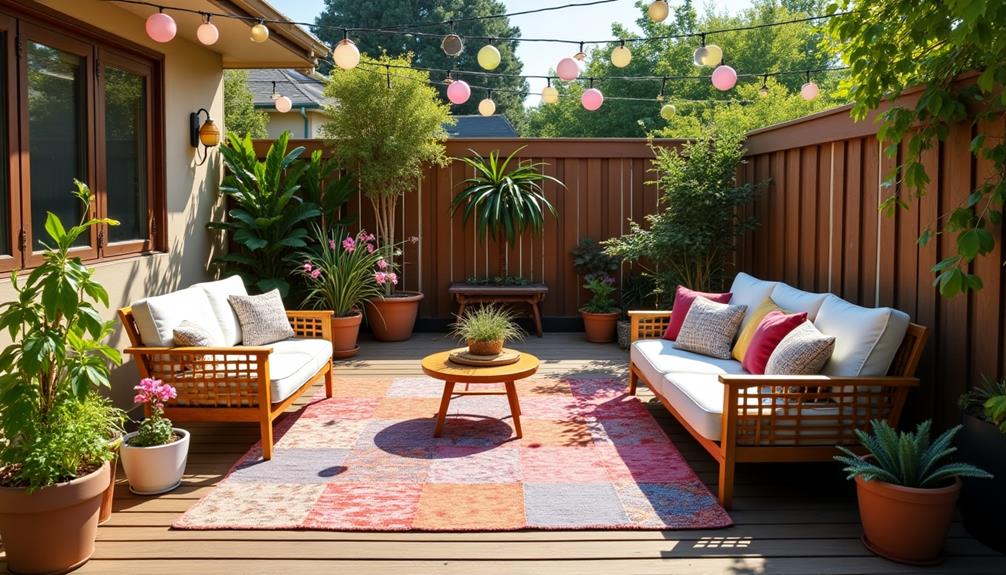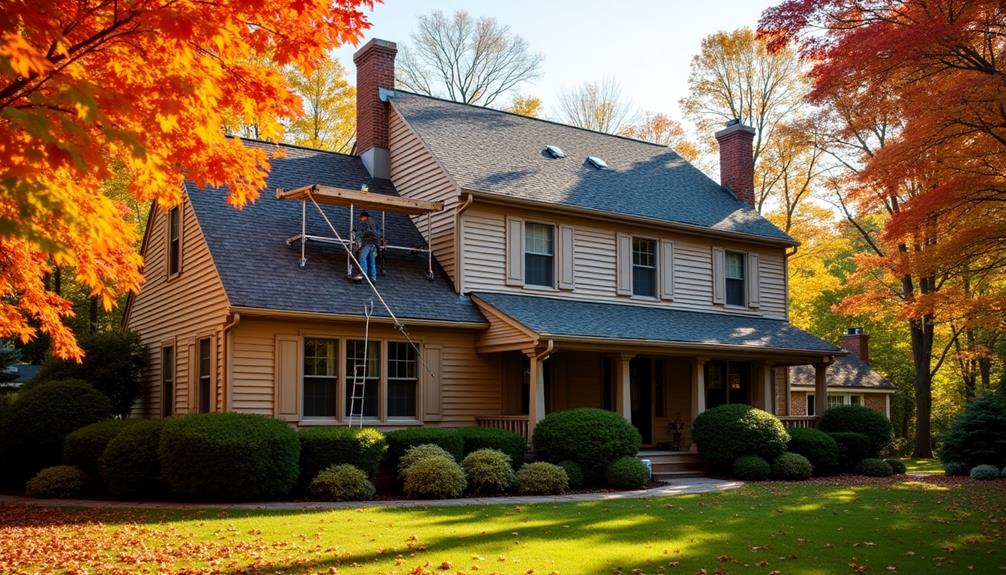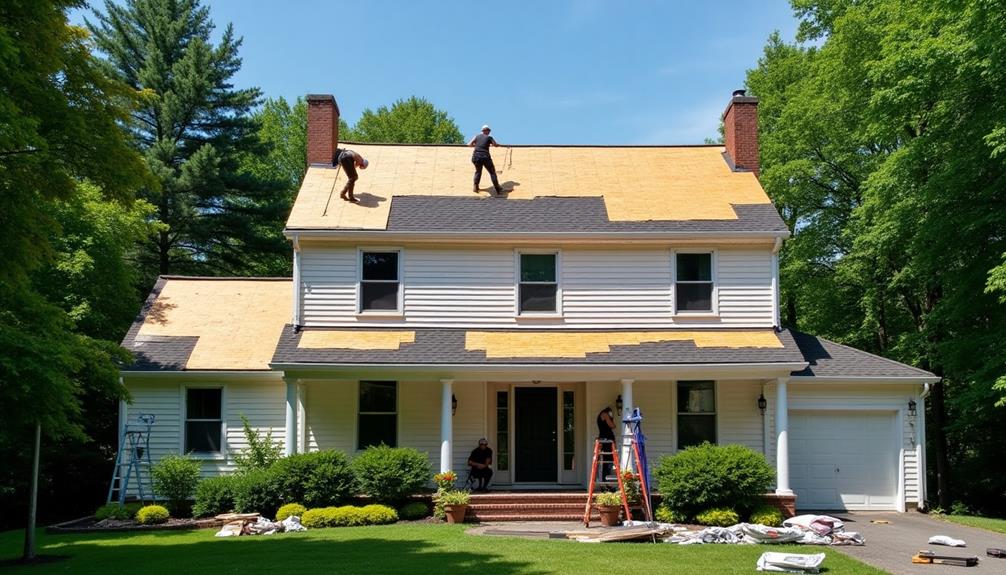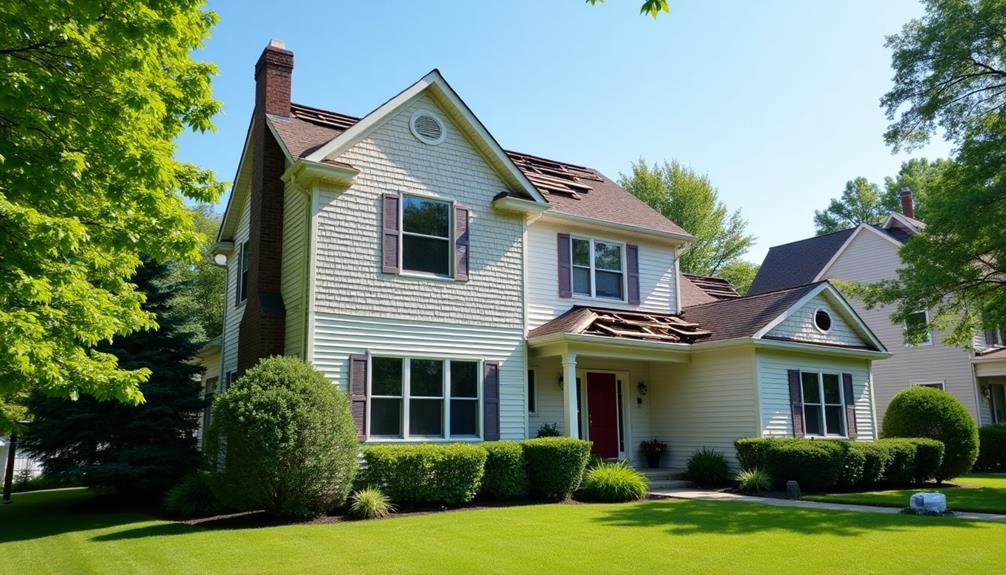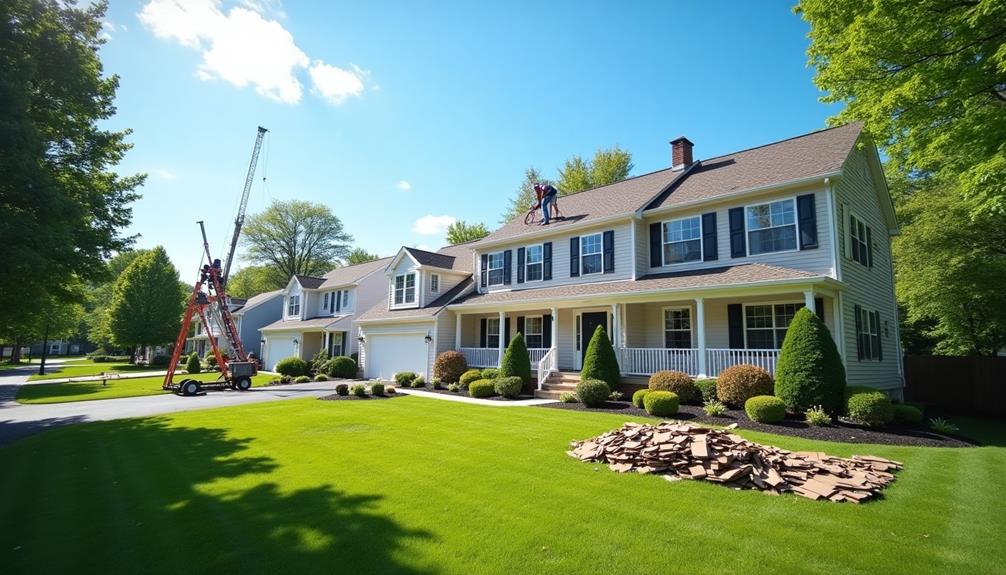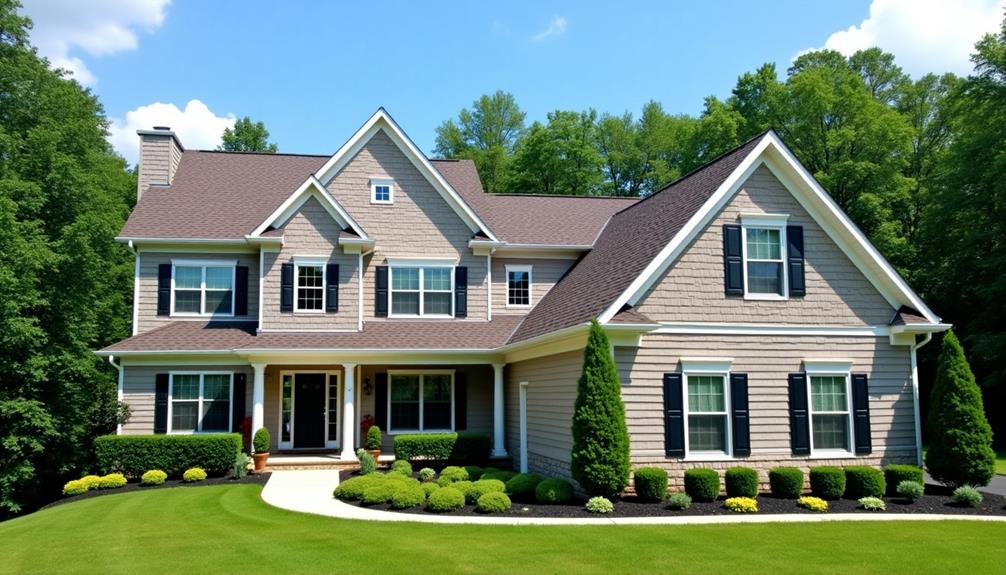If you're looking to elevate your outdoor area, a patio floor makeover might be just what you need. Start by evaluating your current space and consider what style fits your vision. You've got options, from sleek concrete to warm wood, and deciding on the right materials can set the tone. Once you've prepped the surface, think about how paint or stain can redefine its look. But that's just the beginning—there are several innovative techniques that could truly transform your patio into a welcoming retreat. Are you ready to explore some creative ideas?
Assessing Your Current Patio
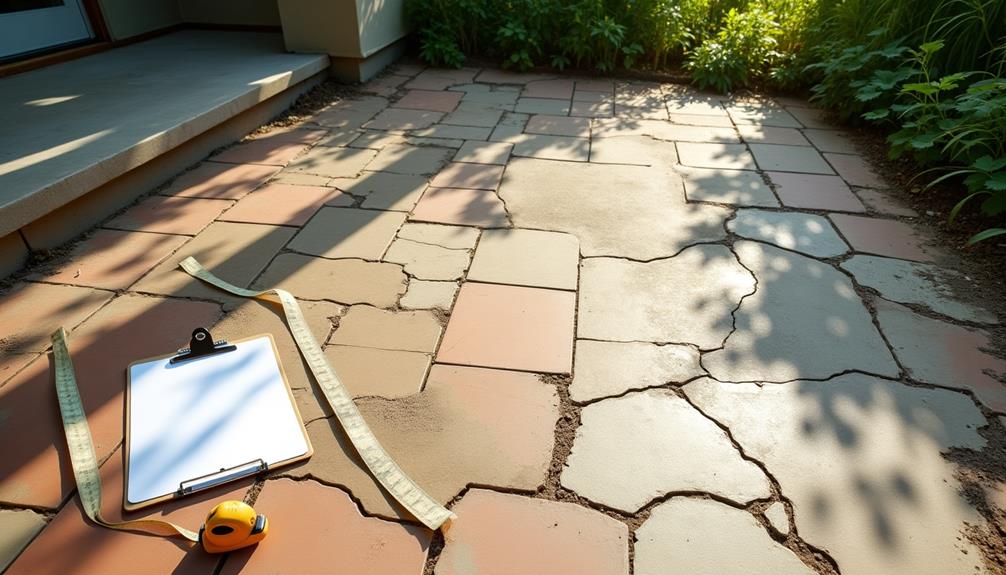
Before diving into your patio makeover, take a moment to assess your current space. Start by measuring your patio size to determine how much room you have for new designs and furniture. Knowing the dimensions helps you visualize what can fit without overcrowding.
Next, evaluate your current furniture arrangement. Are your pieces functional and comfortable? Consider whether the layout encourages social interaction or if it feels cramped. You might want to experiment by rearranging your furniture to create a more inviting atmosphere.
Look for areas that receive sunlight and shade, as this will influence your choice of materials and how you arrange your seating.
Check the condition of your existing flooring, too. If it's worn or outdated, it's crucial to plan for improvements that match your style and needs.
Lastly, think about how you want to use your patio. Whether it's for entertaining, relaxing, or dining, understanding your goals will guide your design choices. Taking these steps will ensure you make informed decisions that enhance your outdoor space.
Choosing the Right Materials
When it comes to choosing the right materials for your patio floor makeover, you'll want to consider various options available to you.
Think about the durability and maintenance each material requires, as well as how it fits your desired aesthetic.
Selecting the perfect combination will ensure your patio looks great and lasts for years.
Material Types Overview
Selecting the right materials for your patio floor can significantly enhance both its aesthetic appeal and functionality. You've got several options to consider, including wood options like cedar or composite materials, which offer warmth and natural beauty.
If you prefer a more durable surface, explore concrete alternatives such as stamped or stained concrete that can mimic other textures while being resilient.
For a classic look, tile varieties in ceramic or porcelain can provide endless design possibilities, allowing you to experiment with different color palettes and patterns.
Don't forget eco-friendly choices like recycled materials or bamboo, which can add a sustainable touch to your outdoor space.
While choosing your materials, think about texture contrasts; combining smooth tiles with textured pavers can create visual interest.
Additionally, keep budget considerations in mind, as prices can vary widely.
Lastly, stay informed about seasonal trends, as certain materials may be more popular or suitable for specific climates.
Durability and Maintenance
Durability and maintenance are crucial factors to consider as you revamp your patio floor. You want materials that can withstand the elements, so look for options with excellent weather resistance. Natural stone, for instance, offers both strength and style, while concrete is highly versatile and resilient against harsh weather conditions.
When choosing the right material, think about how much long term care you're willing to invest. Some materials, like wood, might require regular sealing and staining to maintain their appearance, while others, like porcelain tiles, need minimal upkeep. Consider your lifestyle and how often you host gatherings, as this will influence your choice.
If you're in an area with extreme temperatures or precipitation, prioritize materials known for their durability. Composite decking is another option, combining the look of wood with the durability of synthetic materials, requiring less maintenance over time.
Ultimately, selecting the right materials won't only enhance your patio's longevity but also ensure it stays beautiful with less effort on your part. Take your time to research and invest in options that align with your maintenance preferences and climate challenges.
Aesthetic Considerations
Your patio floor isn't just about functionality; it's also a canvas for your style. Choosing the right materials can elevate your outdoor aesthetics, making your space inviting and visually appealing.
Start by considering color schemes that complement your home and garden. Neutral tones can create a tranquil environment, while bold colors can add a vibrant touch.
Next, think about texture combinations. Mixing smooth tiles with rough stones can create a dynamic surface that's pleasing to the eye. This variety adds depth and interest, making your patio stand out.
Don't forget how your furniture arrangement can influence the overall look. Ensure that your flooring material works harmoniously with your furniture style—be it rustic, modern, or eclectic.
Seasonal decor can also play a role in your patio's aesthetic. Choose materials that can easily transition with your seasonal themes. This flexibility allows you to create visual focal points that draw attention and enhance the outdoor experience.
Ultimately, your patio floor should reflect your personal taste while ensuring practicality—making it the perfect backdrop for your outdoor gatherings and relaxation.
Cleaning and Preparing the Surface
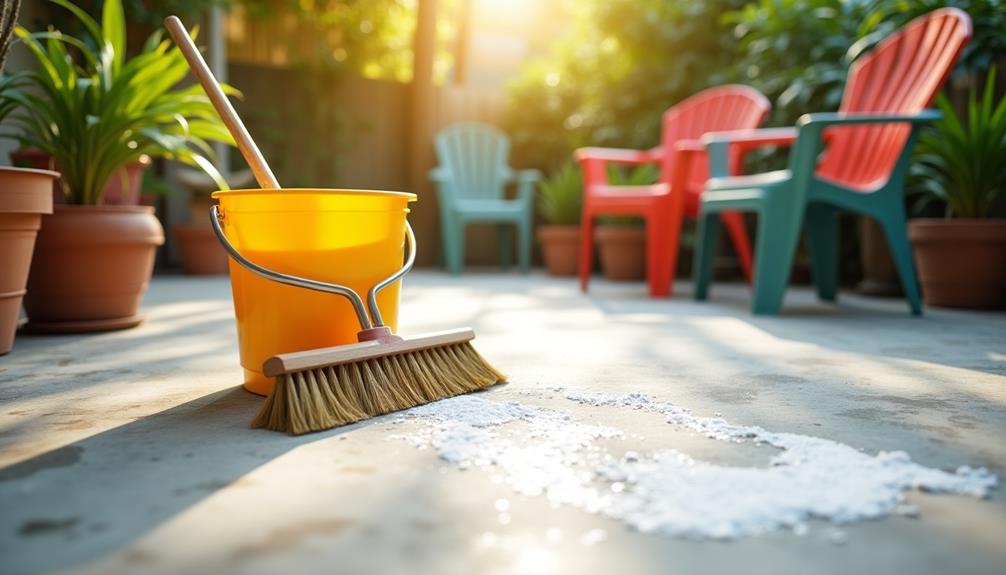
Before you start your patio makeover, you'll need to clean and prepare the surface thoroughly.
Begin by removing any debris and dirt, then use a power washer to achieve a deep clean.
Don't forget to inspect for and repair any surface imperfections to ensure a smooth finish.
Remove Debris and Dirt
To achieve a successful patio floor makeover, start by thoroughly removing debris and dirt from the surface.
Begin by gathering your tools: a broom, a dustpan, and, if needed, a scraper for stubborn spots. Sweep the entire area to clear away leaves, twigs, and any other debris. Pay special attention to corners and crevices where dirt tends to accumulate.
After you've cleared the larger debris, check for any stains or grime that might need extra attention. If you see any, use the scraper to gently lift it away without damaging the surface. This debris removal step is crucial; it sets the foundation for the rest of your makeover.
Once you've removed the bulk of the debris, it's time to focus on dirt prevention for the future.
Consider adding outdoor mats or rugs to catch dirt before it reaches your patio floor. Regular sweeping will also help keep your space clean and ready for your makeover project. By taking these steps, you'll ensure a smooth, clean surface that's primed for the next phase of your patio transformation.
Power Wash Technique
Occasionally, power washing can be the game-changer your patio needs for a thorough clean and preparation. This technique effectively removes grime, mold, and mildew, revealing a fresh surface beneath. The power wash benefits are numerous; not only does it enhance the overall appearance of your patio, but it also extends the life of your flooring material by preventing damage from debris buildup.
To get started, gather your power washer and select an appropriate nozzle for your surface type. A wider spray angle is usually best for delicate materials, while a narrower angle works well on tougher surfaces.
Begin by wetting the area to loosen any stubborn dirt. Then, using consistent, sweeping motions, apply the power wash to your patio. Keep the nozzle about 12 inches away to avoid causing any damage.
Make sure to work in sections, rinsing as you go to prevent soap or cleaning solutions from drying on the surface. After you've finished, allow the patio to dry completely before proceeding with any further treatment.
With the power wash techniques in your toolkit, you'll set a solid foundation for your patio makeover.
Repair Surface Imperfections
Often, you'll find that repairing surface imperfections is essential for achieving a flawless patio finish. Start by inspecting your patio for cracks, holes, or uneven areas. These imperfections can affect both the appearance and longevity of your new surface.
Use a high-quality crack filler to fill in any visible cracks. Make sure to follow the manufacturer's instructions for the best results; typically, you'll need to clean the area first and then apply the filler, smoothing it out to ensure an even surface.
Next, focus on surface leveling. If you notice any low spots or dips, consider using a leveling compound. This compound will help create a uniform surface, essential for any further treatments you plan to apply, such as tiles or paint.
Spread the leveling compound evenly and allow it to cure according to the instructions.
Once everything is filled and leveled, give the surface a final cleaning to remove any debris or dust. This preparation sets the stage for your patio makeover, ensuring a smooth and attractive finish that you'll enjoy for years to come.
Don't skip these crucial steps—they're key to a successful patio transformation!
Painting Your Patio Floor
As summer approaches, refreshing your patio floor with a fresh coat of paint can breathe new life into your outdoor space. Choosing the right color is crucial, so consider the latest patio color trends. Soft pastels and bold hues can create a vibrant atmosphere, while neutral tones offer a calming effect.
Once you've settled on a color, it's time to dive into paint application techniques. Start by gathering your materials: high-quality exterior paint, a roller, brushes, and painter's tape. Clean the surface thoroughly to remove dirt and debris, ensuring better adhesion.
Use painter's tape to protect edges and create clean lines. Begin applying the paint with a roller for large areas, using a brush for corners and edges. Apply two coats for a more durable finish, allowing adequate drying time between applications.
Remember to check the weather beforehand; you'll want a dry day for painting. Finally, let the paint cure properly before placing furniture back on your patio.
With these tips, your newly painted patio floor will be ready for summer gatherings and outdoor relaxation, making it a perfect retreat for you and your guests.
Staining for a Rich Finish

Transforming your patio floor with a rich stain can enhance its natural beauty and provide a sophisticated look that stands up to the elements. Staining is an excellent option if you want to elevate your outdoor space without the hassle of more extensive renovations.
Start by choosing the right stain application method—either a brush, roller, or sprayer—based on your patio's size and texture.
Before you begin, ensure the surface is clean and dry, as this will help the stain adhere properly. Once you've selected your stain, consider the finish types available. A matte finish offers a subtle, natural look, while a glossy finish can give your patio a more polished appearance.
As you apply the stain, work in sections to maintain a wet edge, preventing streaks and uneven coloring. Allow the first coat to dry completely before applying a second coat for depth.
Don't forget to seal the stain afterward; this step locks in the color and protects against wear and tear. With the right stain application and finish types, your patio floor will look stunning and withstand the test of time.
Adding Outdoor Rugs
When you're looking to spruce up your patio, adding outdoor rugs can instantly warm up the space and create a cozy atmosphere.
These rugs not only enhance comfort but also introduce beautiful outdoor textures that make your patio feel inviting. Choose rugs made from durable materials that can withstand the elements while adding style.
Consider your existing color schemes when selecting a rug. A bold, vibrant design can serve as a focal point, while softer hues can complement your current decor.
If your patio features neutral tones, a patterned rug can add just the right pop of color, pulling the entire look together.
Don't forget the size of the rug—measure your space to ensure it fits well. Ideally, the rug should anchor your seating area, making it feel like a cohesive part of your outdoor living space.
Layering rugs can also be an option, combining different textures and patterns for a unique look.
Incorporating outdoor rugs into your patio design not only enhances the aesthetic but also provides comfort underfoot, making it the perfect spot for relaxation or entertaining guests.
Installing Interlocking Tiles
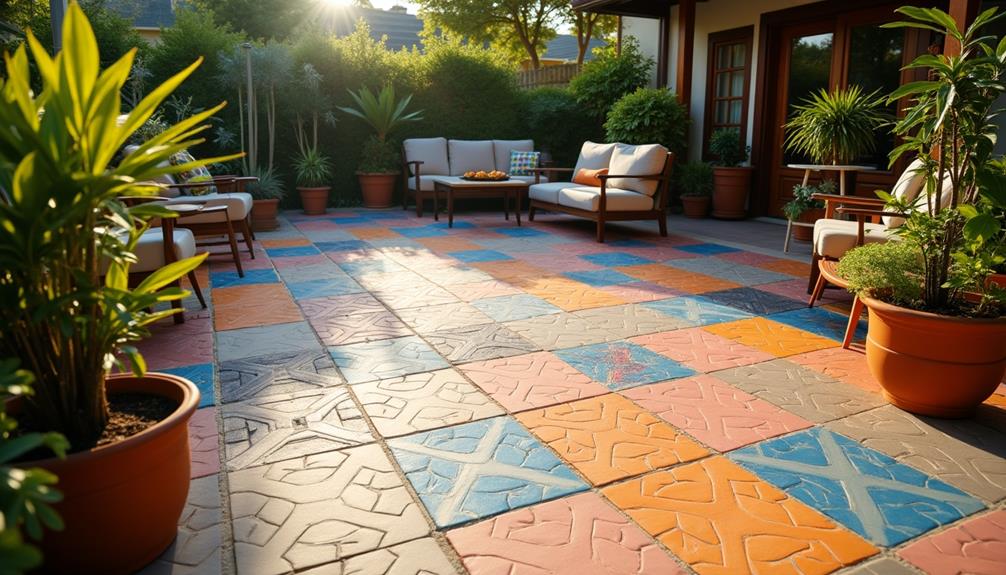
When it comes to installing interlocking tiles, the right choice can make all the difference.
You'll want to consider your options carefully and plan your layout before getting started.
Let's walk through the preparation steps and a straightforward installation guide to help you transform your patio floor.
Choosing the Right Tiles
Choosing the right tiles for your patio makeover can make all the difference in the overall look and feel of your outdoor space. When selecting interlocking tiles, consider the various tile patterns available. A herringbone design can add sophistication, while a checkerboard pattern might bring a playful vibe. Think about how these patterns can enhance your outdoor aesthetics.
Durability is crucial, especially for outdoor environments. Look for tiles made from weather-resistant materials, as they'll withstand the elements and maintain their appearance over time. You want tiles that not only look good but also hold up against rain, sun, and foot traffic.
Color is another key factor. Lighter shades can create a sense of openness, while darker tones offer a cozy feel. You might also want to incorporate contrasting colors to highlight certain areas, making your patio visually interesting.
Lastly, don't forget about texture. Textured tiles can provide extra grip, which is essential for safety, especially in wet conditions.
Preparation and Layout Tips
Before diving into your patio makeover, it's essential to prepare the area properly for installing interlocking tiles. Start by clearing the space of any furniture, plants, or debris. This not only gives you a clean slate but also allows you to assess the condition of your existing surface.
If there are any cracks or uneven areas, fix them to ensure a smooth base for your tiles.
Next, consider your design inspiration. Think about how you want the layout to flow and how the colors and patterns will complement your outdoor space. Lay out the tiles in a dry run, experimenting with different configurations until you find a design that maximizes space optimization while looking visually appealing.
Once you're satisfied with the arrangement, mark the perimeter with chalk or string to guide your installation. This step is crucial as it helps you visualize the entire area and ensures you stay on track during the installation process.
Installation Step-by-Step Guide
With your design laid out and the area prepared, it's time to dive into the installation of your interlocking tiles. Start by gathering your materials: interlocking tiles in your chosen patio colors, a rubber mallet, and a straightedge.
Lay the first tile in one corner of the patio, ensuring it's aligned with your planned floor patterns. Next, continue placing tiles in a row, pressing them together firmly. If you encounter resistance, use the rubber mallet to gently tap the edges until they fit snugly.
Keep an eye on the alignment to maintain the aesthetic of your chosen colors and patterns. Once the first row is complete, move to the next row, offsetting the tiles to create a staggered look. This technique enhances the visual appeal and stability.
As you progress, check for gaps or unevenness, adjusting as necessary. When you reach the edges of your patio, you might need to cut tiles to fit. Measure carefully, then use a saw to make precise cuts.
Continue until the entire space is covered. Step back and admire your beautiful new patio floor!
Using Pavers for a New Look
Transforming your patio with pavers can instantly elevate its aesthetic appeal and functionality. You'll find that pavers come in various shapes, sizes, and materials, allowing you to create stunning designs.
Start by choosing the right paver patterns that suit your style. Whether you prefer a classic herringbone, a modern linear layout, or a random pattern, each choice brings its unique charm.
Next, consider exciting color combinations to enhance your outdoor space. You can opt for earthy tones to create a warm, inviting atmosphere or go bold with vibrant hues for a more contemporary look. Mixing and matching colors not only adds depth but also personalizes your patio.
As you lay your pavers, keep in mind the importance of proper spacing and alignment. This ensures a professional finish and helps with drainage, preventing water from pooling.
With a little creativity and planning, you can transform your patio into a beautiful retreat that reflects your personality. So, roll up your sleeves, and let the transformation begin! Your new paver patio will be a perfect backdrop for gatherings, relaxation, and outdoor fun.
Incorporating Natural Elements
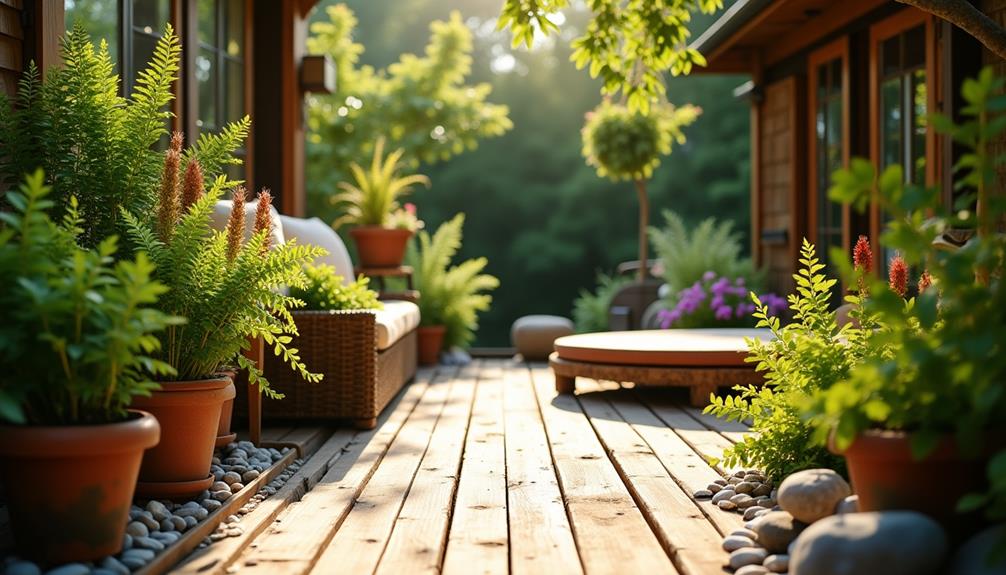
Incorporating natural elements into your patio design can create a harmonious outdoor space that feels connected to the surrounding environment. Start by selecting materials that showcase natural textures, like wood, stone, or clay. These materials not only add depth but also bring an earthy feel to your patio.
Consider using wooden decking or stone pavers for a rustic look that complements your landscape. You can also enhance your space by introducing organic patterns through furniture and decor. Opt for tables and chairs with curved lines or floral motifs to echo the beauty of nature.
Adding cushions or throw pillows with botanical prints can further infuse your patio with a sense of the outdoors. Don't forget to integrate greenery into your design. Potted plants, hanging planters, or even a vertical garden can introduce vibrant colors and natural textures.
The interplay of plants and materials will create a welcoming atmosphere. Lastly, think about how you can use water features, like a small fountain or birdbath, to introduce soothing sounds and attract wildlife.
Enhancing With Lighting Options
Lighting can completely change the ambiance of your patio, making it feel inviting and cozy, especially during the evening. To create a warm atmosphere, consider using string lights draped across your space. They provide excellent ambient lighting, setting a relaxed mood for gatherings.
Solar lanterns are another fantastic option; they're eco-friendly and add a charming touch without needing an outlet.
For safety, ensure you have adequate pathway illumination. Solar path lights can guide guests safely while enhancing the overall look of your patio.
Accent fixtures, like wall sconces or table lamps, can highlight specific areas and create focal points. When selecting your lighting, think about color temperature; warmer tones are generally more inviting.
Don't forget about decorative candles! They add a lovely glow and can be used in various arrangements. If you want flexibility, opt for dimmable options, allowing you to adjust the brightness based on the occasion.
Lastly, pay attention to lighting placement; strategic positioning can elevate your outdoor experience and ensure safety. With these considerations, your patio will transform into a beautifully lit retreat.

